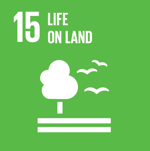Biofortified Maize and Beans with Micronutrients
 Colombia
Colombia
 Bolivia
Bolivia
 Venezuela
Venezuela
Executive Summary
More than 3 billion people do not meet their basic food needs and are at risk of diseases and a lower quality of life due to micronutrient deficiencies. Among the possible solutions is the genetic improvement of crops, which can be a long-term and lower-cost option compared to providing vitamin and mineral supplements or fortifying foods through industrial post-production processes.
This project proposed, based on local agrobiodiversity, to evaluate and produce new corn and bean materials with high mineral and protein content through genetic improvement as an alternative for poor urban and rural communities in Bolivia, Colombia, and Venezuela. Its implementation involved a multidisciplinary team of doctors, nutritionists, social workers, breeders, and agronomists from six institutions specializing in nutrition and genetic improvement. The activities focused on the departments of Cauca and Nariño in Colombia; Cochabamba and Santa Cruz in Bolivia; and the state of Lara in Venezuela. The main specific objectives were:
- Characterization of bean and corn diversity for nutritional quality
- Obtaining new varieties of beans with high mineral content
- Developing protocols for children's diets using biofortified beans and QPM corn
- Training and informing the public and companies about these new opportunities
The technological solution
The technological solution of the Project was based on the genetic improvement of two key species for feeding the population of Latin America: corn and beans. The low quality of traditional corn protein (lysine and tryptophan content) and micronutrient deficiencies (zinc and iron) in poor populations motivated researchers to explore the genetic diversity of both species to remedy these deficiencies. In the case of corn, the solution was to identify and improve the materials known as QPM that show better quality proteins, and in the case of beans, to identify and evaluate lines of this species with higher zinc and iron contents. Although the studies carried out do not lead to immediate solutions, they do provide an important base of knowledge and experience for other initiatives of this nature.
Results
A total of 248 bean accessions in Bolivia, 98 in Colombia and 63 in Venezuela were analyzed for iron and zinc content by the atomic absorption methodology. The range of iron fluctuated between 40 and 100 ppm and in zinc from 20 to 51 ppm. Lines NUA45 and NUA35 were found to have a high content of both elements.
In the case of QPM corn, the best hybrid in eleven locations was (CML264Q / CML273Q) CML491 with a yield of 5.28 t / ha. Hybrid seeds and varieties were multiplied to make their benefits known to farmers, technicians and NGOs.
The differential in iron concentration in genetic resources evaluated was between 15 and 20 ppm. Protocols for bean / maize diets and nutrition studies with 300 children in nurseries were designed. 20% of children with anemia were found at the beginning, although hemoglobin levels increased at the end, indicating that biofortification can contribute to populations with deficiencies.
In anthropometric and biochemical tests, no significant differences were found between the biofortified group and other groups, possibly because the population had good nutritional status and differences in soil and climate affect iron and zinc concentrations.
Beneficiaries
The potential beneficiaries are consumers in rural and urban areas, especially women and children who normally show nutritional deficiencies. The information obtained is relevant for researchers and planners of agri-food policies in participating countries.
A case of interest directly related to the project's results was documented in Bolivia. The Pairumani Seed Center in 2007 sold 45,000 kg of improved opaque 2 maize seed (QPM), standing out the Aychasara 101 variety. If we consider that small farmers buy an average of 15Kg per family, the benefits were extended to about 3,000 families!
Sustainable Development Goals




Participating Organizations
Executor
- International Center for Tropical Agriculture (CIAT) - Colombia
Co-executor
- FIDAR - Colombia
- Univalle - Colombia
- UAGRM - Bolivia
- CIFP - Bolivia
- Instituto Nacional de Investigaciones Agrícolas (INIA) - Venezuela
Graphics and data
Financing by country (in USD)



























